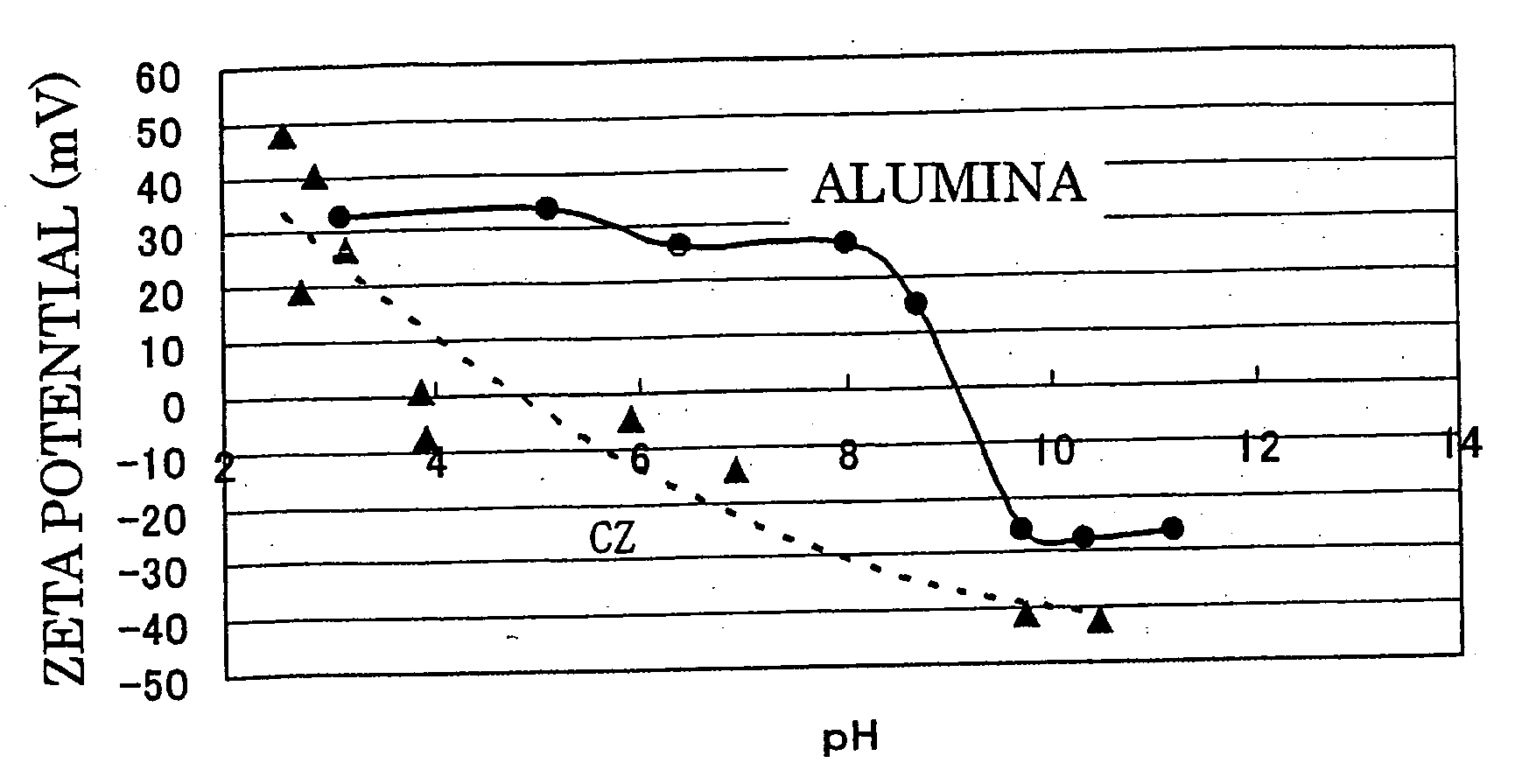Porous composite metal oxide and method of producing the same
a composite metal oxide and metal oxide technology, applied in the direction of catalyst activation/preparation, metal/metal-oxide/metal-hydroxide catalysts, machines/engines, etc., can solve the problem of strict restrictions imposed on noxious components in exhaust gas, and achieve good durability, high cleaning performance, and maintain a specific surface area
- Summary
- Abstract
- Description
- Claims
- Application Information
AI Technical Summary
Benefits of technology
Problems solved by technology
Method used
Image
Examples
example 1
[0067] Ceria-zirconium composite oxide (CZ) powder, which was an aggregate of the primary particles each with a diameter of approximately 8 nm, and which was 100 nm in average particle diameter, was dispersed in an aqueous solution at a pH of three, by use of zirconia microbeads each with a diameter of 50 μm, for 90 minutes. Thereby, CZ particles, which were 22 nm in average particle diameter, not less than 80% by mass of which were not larger than 43 nm in diameter (D80=43 nm), were obtained (in the dispersing step).
[0068] Subsequently, a nitric acid solution of Pt nitrate (the Pt concentration=4.5% by weight) was applied to the CZ particles thus obtained, and thereby the CZ particles were caused to bear Pt in the below-mentioned manner. Accordingly, the CZ particles bearing Pt (Pt / CZ particles) were obtained (in the bearing step). Specifically, the CZ particles were impregnated with, and were borne by, the Pt nitrate solution. Thus, the CZ particles were calcined at 300° C. for t...
example 2
[0071] A catalyst was obtained in common with Example 1, except for by use of CZ particles shown in Table 1 which were obtained by means of performing the dispersing step for 120 minutes, and except for by use of alumina powder, which was an aggregate of primary particles each with a diameter of 10 nm, and which was 110 nm in average particle diameter. The specific surface area of the catalyst thus obtained was as shown in Table 2.
example 3
[0072] A catalyst was obtained in common with Example 1, except for by use of CZ particles shown in Table 1 which were obtained by use of an aqueous solution at a pH of 5 in the dispersing step. The specific surface area of the catalyst thus obtained was as shown in Table 2.
PUM
| Property | Measurement | Unit |
|---|---|---|
| diameter | aaaaa | aaaaa |
| particle diameter | aaaaa | aaaaa |
| particle diameter | aaaaa | aaaaa |
Abstract
Description
Claims
Application Information
 Login to View More
Login to View More - R&D
- Intellectual Property
- Life Sciences
- Materials
- Tech Scout
- Unparalleled Data Quality
- Higher Quality Content
- 60% Fewer Hallucinations
Browse by: Latest US Patents, China's latest patents, Technical Efficacy Thesaurus, Application Domain, Technology Topic, Popular Technical Reports.
© 2025 PatSnap. All rights reserved.Legal|Privacy policy|Modern Slavery Act Transparency Statement|Sitemap|About US| Contact US: help@patsnap.com


